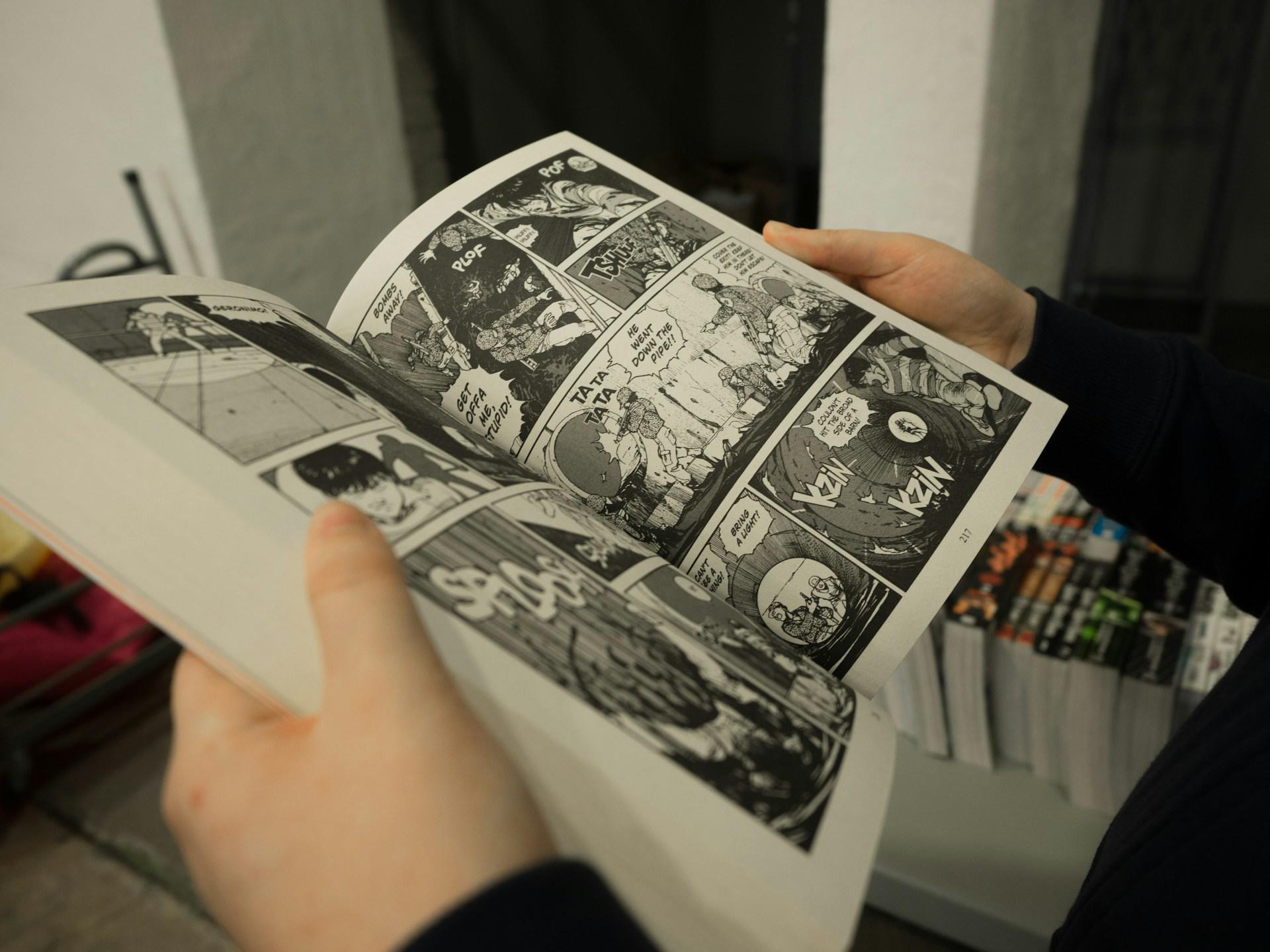Around the world, Japanese is one of the most popular languages to study. Learners flock to bookstores searching for the best Japanese textbooks to help them master this tongue as quickly and thoroughly as possible. While they're there, these students scour the manga racks for the latest instalments of their favourite tales.
Japanese cultural exports like manga and anime help to drive this interest but Japan has its own mystique. Stories of the Shogun and geisha cultures fuel the desire to learn more about this land. Whether you just want to go to Tokyo for a few days or intend to sit the Japanese Language Proficiency Test (JLPT) and relocate, you must learn how to speak Japanese.
In a classroom, online or on your own, you have many different methods for learning Japanese. No matter which one you choose - or whether you choose a combination of all three, you have to have learning resources. Thanks to the popularity of Japanese language study, you're spoilt for choice when it comes to the best books for learning Japanese.
With such a glut available, it's hard to know which ones to choose. As costly as books are, you'll want only those that will advance your language learning goals. Superprof has scoured bookshelves and perused recommendations to present you with the best titles.

Best Japanese Textbooks
Often, no matter how fervently one wants to learn, they have neither the time nor the budget to attend classes. That doesn't stop them from learning Japanese online, where they find a wealth of free resources for learning Japanese. However, such students would do well to have a companion textbook to give their self-study some structure.
For such learners, Genki is the perfect choice. The Japan Times publishes this volume in a progressive format, as an actual textbook. You cannot skip ahead or select learning topics at random (at least, you shouldn't). Everything is cumulative, just like any other schoolbook.
This manual breaks into two sections. The Reading/Writing part teaches the kanji and reading comprehension. Those texts come from the Conversation/Grammar section where you'll find simple dialogues. Besides those, this section focuses on vocabulary, sentence structure and culturally relevant phrases.
Intermediate Japanese learners have pointed out that this book's use of romaji doesn't follow general standardisation rules. Also, it doesn't teach stroke order to write kanji properly. However, you will finish this manual with a vocabulary of roughly 3000 words and you'll get lots of practice using the Japanese you study. Each chapter ends with a generous allotment of exercises.

Japanese Learning Books
Among the books to learn Japanese, you must have a dictionary. We not talking about English-Japanese translation tools, here. Those help in a pinch if you're lost on the streets of Tokyo but they don't do much to help you understand Japanese grammar. For that, you need A Dictionary of Basic Japanese Grammar, also called the Yellow Book.
This volume is not to be confused with Nihongo No Hong, which has the 'yellow' kanji on its cover. That Japanese grammar guide is a study manual for the JLPT exam's N5 level. Should you search the internet for 'yellow book Japanese', this one will likely be the first result. It has good information in it but that knowledge is targeted at a specific purpose.
Seiichi Makino and Michio Tsutsui wrote the yellow-covered book you're looking for. As its name suggests, it is a grammar dictionary, not a vocabulary lexicon - although you will find lots of Japanese words and phrases in it. Best of all, it comes in other colours! 'Blue' and 'Red' books are for more advanced learners.
Japanese grammar is not only vastly different from our own but it is tricky to master. Beginner Japanese learners often confuse similar grammar constructions and forget when to use them. This book makes all of these learning challenges easy to overcome.

Best Books for Learning Japanese: Kodansha's
As we mentioned in the previous segment, plenty of Japan enthusiasts are learning Japanese via an app online. Still, nothing beats a physical book you can hold in your hand and 'save' pages with colourful sticky tabs. Besides, they're much easier to read.
Have you advanced far enough in your Japanese studies to know about furigana? These are the small kana written above or alongside kanji to clarify their meaning and pronunciation. You'll see these small syllabic characters in children's books as well as beginner Japanese study materials.
Your resources might come with romaji rather than furigana but you'll spot them soon enough in your learning journey. Thus, you should learn what they are, what they represent and how to interpret them. For that, you have no better guide than Kodansha's Furigana Japanese Dictionary, a companion to the brand's Kanji Learner's Dictionary.
Unlike other Japanese dictionaries for speakers of other languages, this one is organised by kana, not the alphabet English speakers use. It enforces the use of the Japanese writing system; you'll find no romaji in any of the entries.
However, you will see many sample sentences demonstrating the usage of furigana-noted words.

Best Japanese Textbooks for Mastering Kana
Compared to kanji, Japanese kana seems abstract. Kanji are Chinese characters whose genesis were drawings of what the word represents. By contrast, it's hard to make a connection between きもの (kimono) and anything resembling clothing.
Mnemonics are a great way to remember information. Such memory devices may be short verses, visualisations or a physical act, such as using your knuckles to remember the 'nines' multiplication table. Mnemonics work wonders to help you remember the kana and how to write them.
James Heisig presents a host of such devices in Remembering the Kana. It's helpful if you're just starting to learn Japanese and particularly so if memorising them is hard for you. On the other hand, if you've had no trouble learning this syllabary system so far, you might find his explanations overly complicated.
If you're taking lessons with a Japanese tutor via webcam, don't be surprised if your teacher recommends this work and its companion, Remembering the Kanji. Your individual kana mastery aside, this book makes for engaging reading. It's a fine resource to draw on if you want to gain a different perspective on this writing system.
Japanese Learning Books for Busy People
In the mid-1970s, interest in the Japanese language and culture skyrocketed. Japan was producing everything from cars to cameras. At that time, this nation led the world in technological innovation. Its phenomenal entry into the global markets spurred - and then heightened interest in all things Japanese.
Godzilla films helped quite a bit, too. It was around that time that this creature evolved from being a radioactive monster to being a superhero of sorts. Anime became the second major Japanese cultural export and manga followed soon after. Today, students of Japanese spend many pleasant hours learning Japanese via videos and movies.
Back to our topic, now. At the peak of that era, the Association for Japanese-Language Teaching (AJALT) formed. Their aim was to teach students keen on Japanese culture how to speak the language. Now, nearly 50 years in business, this group has put together a kit of learning resources every Japanese learner can benefit from.
AJALT presents a three-book learning program that covers all aspects of Japanese language study, from the writing system to cultural understanding. Across the series, each study unit covers a targeted area - grammar, vocabulary, writing and so on. Students may download accompanying audio files from AJALT's website.
Besides the three textbooks, AJALT has compiled workbooks for each volume. The practice exercises help the students apply the Japanese skills they learn as they move through the course.
This program is suitable for classroom use or to study Japanese on your own. If you'd rather self-study, the AJALT's website offers support and other learning resources.
Discover your perfect tutor for an online Japanese course here on Superprof!

Best Japanese Textbooks
Our introduction promised you a glut of Japanese learning books. The ten we've highlighted barely scratch the surface. If you're taking Japanese lessons in school or with a private tutor, you could probably recommend a few others.
If, indeed, you are enrolled in a Japanese learning course, you might not want to overdo the learning resources. No two manuals present information in the same ways. You might confuse yourself following one textbook's advice, only to find that your school's textbooks don't have the same information.
However, Japanese for Dummies is a 'safe' addition to your collection of Japanese learning books. It's lighthearted and amusing; it features the cartoonish graphics the For Dummies brand is known for. And it's limited in scope: it touches only lightly on Japanese grammar, focusing more on pronunciation and dialogue.
That's not to say you'll find no grammar instruction. These books contain summaries of verbs and adjectives to know in specific situations. It's also portable. You can download it to your smartphone and use it on the go.
Still, even the most comprehensive textbook can't answer questions or engage you in conversation. You must include speaking and listening to native Japanese speakers in your study plan.
Learn Japanese Sydney when you find a private tutor on Superprof!















